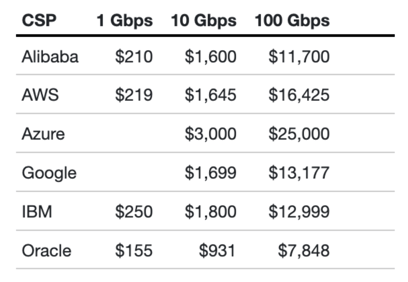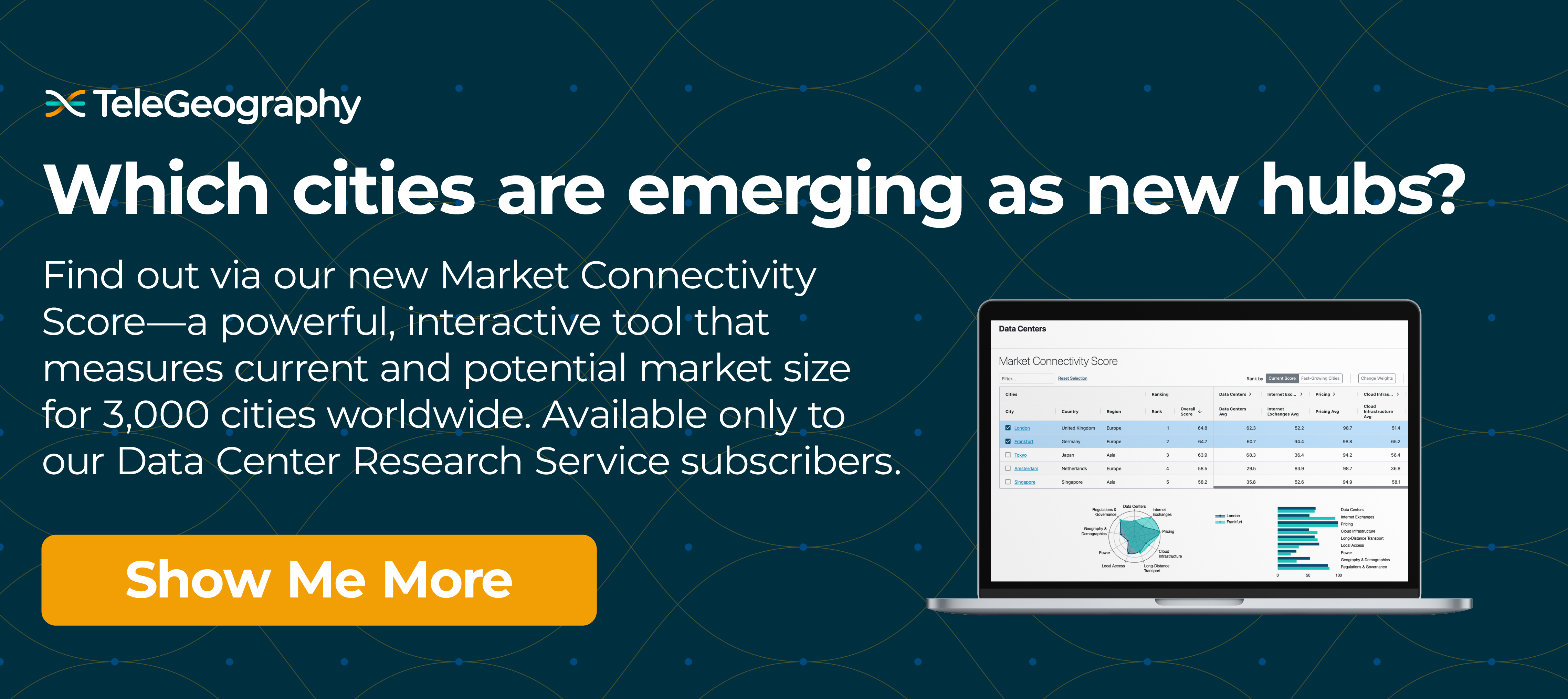Major Cloud Service Providers (CSPs) offer dedicated, private network connections to their services. These connections complement enterprise WANs with secure, high-performance connectivity.
Today, we'll examine dedicated connection pricing.
CSPs have pricing mechanisms to calculate and determine costs for specific use cases, including the total package of connectivity, compute, storage, and application services. This analysis focuses on connectivity charges.
The basic billing model for dedicated cloud connections includes the following:
-
Port fees. The port defines the bandwidth of the connection. They may vary by region.
-
Data egress. Per GB fees for data transfer from the CSP network. Basically, the data you download from the cloud.
-
Inter-regional connectivity within the CSP network. Some CSPs offer a transport service within their network. Most specify different regional egress charges.
-
Individual VLANs and compute associated with specific applications. These are separate virtual circuits traversing the connection.
-
Partner network provider services. These are billed separately from the CSP services. Cross-connects for dedicated connections within colocation facilities; WAN services linking customer premises with CSPs.
Dedicated Port Fees
CSPs list some of their port fees by the hour, and some by monthly recurring charge, which is the traditional methodology for Network Service Providers (NSPs). Where quoted hourly, we convert it to monthly, using 730 hours per month.
Dedicated Port Prices for Major CSPs

Here are a few things to take note about the table:
- Alibaba quotes monthly global prices, except for mainland China, which are about 55% less.
- AWS quotes hourly global prices, except for Japan, where the 10 Gbps price is 5% less.
- Azure quotes monthly for a pair of redundant ports. For comparison to single ports from other CSPs, we show half that price.
- Azure prices are for U.S., Canada, and Europe. Its port prices vary in other regions between 17% to 60% higher.
- Azure offers three service tiers. This is the standard tier, with access to on-ramps in the same geopolitical region. A local tier limits access to only one metro but forgives egress fees. A premium tier affords access to all regions for an extra fee.
- Price differences reflect the CSPs' different network cost bases, and how they pass those costs through to end users. CSPs offer network connectivity as a conduit to their core storage, serving, and compute services.
Partner Port Fees
CSPs offer an array of more granular connections via specified NSPs. Some offer both metered and unmetered options, as well as performance tiers.
Here's a table of standard performance metered pricing, which serves as a common denominator.
Port Fees for Dedicated CSP Connections via NSPs (USD/Month)
.png?width=654&name=Port%20Fees%20for%20Dedicated%20CSP%20Connections%20via%20NSPs%20(USDMonth).png)
Here are a couple of things to note about the table:
- Alibaba quotes global prices, except mainland China, where prices are less than half the global price above 300 Mbps.
- AWS prices in Japan are approximately 5% less.
- Oracle does not specify NSP pricing.
One factor to consider is the increase in price associated with an increase in capacity.
AWS charges 7.5 times more for a 10 Gbps (which is 10 times the port size of a GigE). This multiple resembles that of an IP transit service in the wholesale connectivity market. But for DIA, the price multiple is closer to 4x. For wavelength transport, the multiple shrinks below 2x.
To put cloud pricing into perspective, we can compare it with other network services.
IP transit and optical transport services are the best proxies for multi-Gbps connectivity—even after acknowledging that transport is inherently unmetered, and the transit price reflects a flat rate assuming full port utilization.
We'll use transit pricing for New York and transport pricing for Chicago–New York to illustrate this point.
MRC Equivalents for Cloud Connects and Carrier Services

Azure's ExpressRoute stands out as the most expensive cloud connection. But it's still less than the equivalent IP transit service. CSP multiples are similar, and most closely resemble those for IP transit.
Patrick Christian
Patrick Christian is a Senior Research Manager with TeleGeography. He heads the Cloud and WAN Research Service. He also focuses on African and European markets specializing in international bandwidth markets and internet infrastructure, WAN services, terrestrial and submarine cable systems, and international voice traffic analysis.


